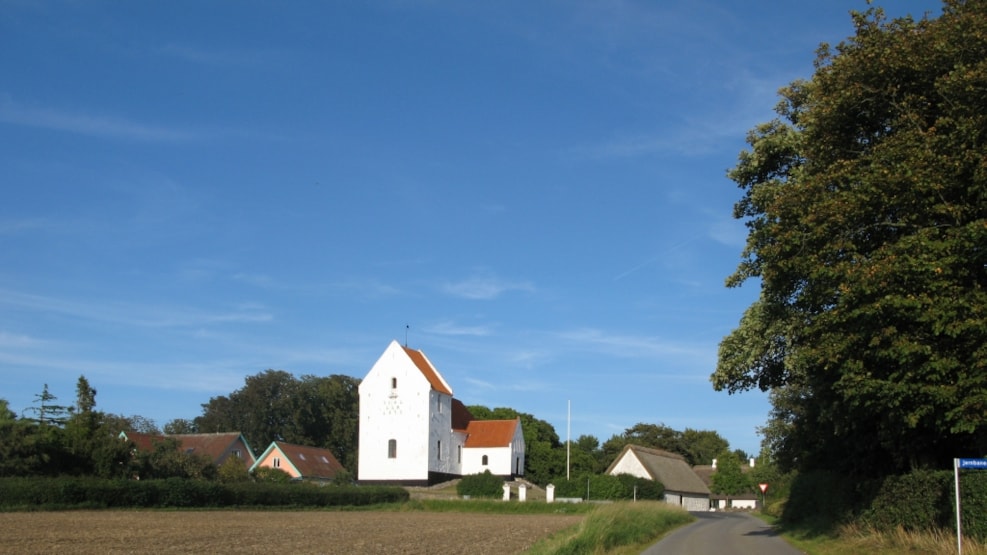
Tryggelev Church
This church stands on a low hill, and is adjacent to a beautiful church barn built from large field stones.
History
Even though Tryggelev church has been altered, restored and extended a number of times since the 13thcentury, it is still possible to see some features of the original building. The north door, one of the windows and the granite baptismal font are all Romanesque in style. It is believed that the baptismal font may be even older than the church itself, possibly originating from an earlier wooden church that was built on this site. The porch and the tower are later additions. Construction of the tower began in 1530, but it was not finally completed until 1646. Since that time the church has been restored on a number of occasions. In 1872, the church was given its current ceiling with its plastered shallow vaulting, a feature that can be also seen in a number of Langeland’s other churches. Further restoration work was carried out as recently as 2013 when a number of changes were made to the church’s interior. For example, a new altarpiece was created by the Langeland artist Gitte Buch. The original altarpiece depicted Christ and a woman standing by a well, the new has the same motif except Jesus and the woman have been merged into a single figure.
The Church Barn
The church barn dates all the way back to around the year 1300. It is built of large, unworked field stones. Church barns were once common in Denmark, and this particularly beautiful example is now one of the very few old, well preserved church barns that Denmark has left. If you have the chance of seeing inside the barn, it will give you a glimpse of what the interior of a Romanesque church originally looked like.